Stress and poor lifestyle choices lead to increased inflammation within the body. Disease and weight gain are the eventual repercussions of prolonged inflammation. Eating healthy ketogenic meals, exercising, fasting, and meditating regularly can reduce inflammation and provide immeasurable health benefits. Below are the concepts to my Healthy lifestyle program. Important note: This lifestyle is great for most people, but a warning on the ketogenic part to those who are on prescribed insulin or are type 1 diabetic. Fasting and low-carb diets for such individuals have the potential to cause diabetic ketoacidosis, a serious, life threatening condition when toxic levels of blood glucose and ketone levels occur. This is very rarely caused by a ketogenic diet alone and usually only occurs from poor diabetic maintenance, excessive alcohol consumption, and extreme sudden dietary changes. These individuals should definitely work with a licensed medical doctor (preferably an N.M.D. or naturopathic medical doctor) to adjust their medications and make sure there are no issues along the way. In general, a ketogenic diet has tons of benefits for your health, but is still a good idea to get regular metabolic blood work done when making major changes to your diet or if you have any major health concerns. Don’t stop reading yet though! This could still have real life-changing benefits for you!
Eat Low Amounts of Carbohydrates
 Less than 5% of your calories should come from carbohydrates (roughly 30-50 grams) on a daily basis. Except with carb cycling; I’ll get to that later. Consume mostly high fiber, low-carb/low sugar, vegetables, fruits, nuts, and seeds for carbohydrates. Eat 1-2 cups of high fiber, low calorie vegetables at every meal, i.e. broccoli, cauliflower, kale, spinach, brussel sprouts, asparagus, etc. Grains, starches, and high sugar fruits should be avoided or at least significantly minimized, especially in the beginning.
Less than 5% of your calories should come from carbohydrates (roughly 30-50 grams) on a daily basis. Except with carb cycling; I’ll get to that later. Consume mostly high fiber, low-carb/low sugar, vegetables, fruits, nuts, and seeds for carbohydrates. Eat 1-2 cups of high fiber, low calorie vegetables at every meal, i.e. broccoli, cauliflower, kale, spinach, brussel sprouts, asparagus, etc. Grains, starches, and high sugar fruits should be avoided or at least significantly minimized, especially in the beginning.
 Fruit is important for health reasons. Colorful berries are great because they contain antioxidants, like phytonutrients, and are lower in glycemic index, meaning they don’t cause as much of a blood sugar spike. One cup of blackberries only contains 6 net carbs. Just don’t eat too many at once. Think about finding a blackberry bush in nature, your’e not going to get that many. Small serving sizes of carbohydrates is key! Melons and other high-glycemic fruits should be significantly minimized because they cause spikes in blood sugar levels, which lead to increased fat storage and carbohydrate cravings. Coconuts, avocados, and olives are excellent fruits because they are high in healthy fats, like fatty acids and MCT’s (Medium Chain Triglycerides) that are excellent for fuel and other health processes in the body, and are also low in net carbohydrates. These should be consumed regularly. I recommend eating 1/2 to 1 avocado, as well as at least 2 Tbsp of MCT oil on top of your veggies or proteins each day. Tree nuts such as pecans, macadamias, and walnuts are also excellent carbohydrate choices, as they are high in healthy fats and fiber, while much lower in net carbs.
Fruit is important for health reasons. Colorful berries are great because they contain antioxidants, like phytonutrients, and are lower in glycemic index, meaning they don’t cause as much of a blood sugar spike. One cup of blackberries only contains 6 net carbs. Just don’t eat too many at once. Think about finding a blackberry bush in nature, your’e not going to get that many. Small serving sizes of carbohydrates is key! Melons and other high-glycemic fruits should be significantly minimized because they cause spikes in blood sugar levels, which lead to increased fat storage and carbohydrate cravings. Coconuts, avocados, and olives are excellent fruits because they are high in healthy fats, like fatty acids and MCT’s (Medium Chain Triglycerides) that are excellent for fuel and other health processes in the body, and are also low in net carbohydrates. These should be consumed regularly. I recommend eating 1/2 to 1 avocado, as well as at least 2 Tbsp of MCT oil on top of your veggies or proteins each day. Tree nuts such as pecans, macadamias, and walnuts are also excellent carbohydrate choices, as they are high in healthy fats and fiber, while much lower in net carbs.
How to start a Low-carb Diet

If you are used to consuming lots of breads, pasta, rice, or high-glycemic carbs you may not feel well when first starting a low-carb diet. You’re body is so used to getting energy solely from carbohydrates, that it doesn’t know how to effectively use stored fat for energy. This is a term called “bonking”. Picture a gasoline tanker truck that’s run out of gas while driving. It has the gas in the storage tank, but can’t quite access it without help. It will take some time to break the bodies’ habit of refusing to tap into these fat stores and it may cause some flu-like symptoms in the beginning. Consider tapering and slowly reducing the carbs from your diet to reduce the shock to your body. Lower your carb intake every day for a two week period until reaching 30 net grams a day, subtracting dietary fiber and sugar alcohols from the total (example: 200g, 175g, 150g, 125g, 100g, 90g, 80g, 70g, 60g, 50g, 40g, 30g, etc.). You may feel a bit drained by the end of this period, but it gets better, I promise! While your carbohydrate intake is lowered, your healthy fat intake should be increased up to 70-80% of your calories. Be careful, too much protein will increase blood glucose levels and knock you off track. Your carbohydrate source during this period should be almost completely vegetable based. Try and take most of your carbs in during the first part of the day and around exercise when you need the energy, forcing your body to burn more fat when it doesn’t have the carbs. Make sure you don’t eat too many carbohydrates in a single sitting, and try not to eat anything sooner than 2 hours before bedtime (see more on fasting below). Stay at this for a few more weeks, consuming only vegetable-sourced carbohydrates before finally adding in more fruits and increasing daily carbohydrate intake up to 50 grams.  NO grains or starches during the first few weeks of this process! This includes bread, rice, pasta, potatoes, corn, and beans. They have a high-glycemic index, and will keep you from reaching your goals. You should continue to avoid these afterwards for other.. reasons. *Nudge* You might also want to consider less intense exercise for the first couple of weeks. Supplementing with exogenous ketones during this process can be extremely helpful for the low-carb, flu-like symptoms in the beginning, as well as speed up the process. Once you push through the drain and enter ketosis, you will feel amazing! Absolutely amazing! Energized, focused, satiated, happy, and on top of the world! Your joints will stop hurting, excess weight will melt off, and you will feel healthier than ever before! I will reiterate that you need to be careful if you are on prescribed insulin or are type 1 diabetic because your body may not function properly here. Work with a Naturopathic doctor to monitor your ketone and blood glucose levels, and make sure that you won’t go into diabetic ketoacidosis. Also, it is a good idea for anyone with existing metabolic concerns to monitor LDL-p cholesterol levels during this transition.
NO grains or starches during the first few weeks of this process! This includes bread, rice, pasta, potatoes, corn, and beans. They have a high-glycemic index, and will keep you from reaching your goals. You should continue to avoid these afterwards for other.. reasons. *Nudge* You might also want to consider less intense exercise for the first couple of weeks. Supplementing with exogenous ketones during this process can be extremely helpful for the low-carb, flu-like symptoms in the beginning, as well as speed up the process. Once you push through the drain and enter ketosis, you will feel amazing! Absolutely amazing! Energized, focused, satiated, happy, and on top of the world! Your joints will stop hurting, excess weight will melt off, and you will feel healthier than ever before! I will reiterate that you need to be careful if you are on prescribed insulin or are type 1 diabetic because your body may not function properly here. Work with a Naturopathic doctor to monitor your ketone and blood glucose levels, and make sure that you won’t go into diabetic ketoacidosis. Also, it is a good idea for anyone with existing metabolic concerns to monitor LDL-p cholesterol levels during this transition.
 If you don’t know how many carbohydrates that you are consuming, Google the product or food and track your daily intake with myfitnesspal for the first few weeks, to get a general idea.
If you don’t know how many carbohydrates that you are consuming, Google the product or food and track your daily intake with myfitnesspal for the first few weeks, to get a general idea.
Eat More Healthy Fats
 Eat healthy fats in place of your carbohydrates for calories that are slower burning. As mentioned previously, 70-80% of your calories should come from healthy fats. The goal is to get your body into ketosis to tap into your fat stores, produce more efficient energy, and reduce oxidative stress on the body.
Eat healthy fats in place of your carbohydrates for calories that are slower burning. As mentioned previously, 70-80% of your calories should come from healthy fats. The goal is to get your body into ketosis to tap into your fat stores, produce more efficient energy, and reduce oxidative stress on the body.
Oxidative stress leads to inflammation, and remember, inflammation leads to disease and weight gain. ATP, or “the energy currency” is the energy of life that all living things survive on. The production of ATP generates free radicals, putting a toll, or essentially a time limit on the body; the Yin and Yang of life. In comparison to glucose (carbohydrates), ketone molecules are extremely energy efficient, are preferred by the heart and brain, and produce much more ATP with less oxidative stress on the body. Hence the increased energy, anti-inflammation, anti-aging, and disease preventing benefits. It can stunt the growth of multiple forms of cancer. Additionally, the acetoacetate and acetone produced from ketosis can stop seizures in epileptics. Ketones do not require insulin, therefore have amazing benefits for diabetics. Although, again, you need to be careful if you are on prescribed insulin or are type 1 diabetic. Work with a Naturopathic doctor to monitor your ketone and blood glucose levels, and make sure that you won’t go into diabetic ketoacidosis.
ATP, or “the energy currency” is the energy of life that all living things survive on. The production of ATP generates free radicals, putting a toll, or essentially a time limit on the body; the Yin and Yang of life. In comparison to glucose (carbohydrates), ketone molecules are extremely energy efficient, are preferred by the heart and brain, and produce much more ATP with less oxidative stress on the body. Hence the increased energy, anti-inflammation, anti-aging, and disease preventing benefits. It can stunt the growth of multiple forms of cancer. Additionally, the acetoacetate and acetone produced from ketosis can stop seizures in epileptics. Ketones do not require insulin, therefore have amazing benefits for diabetics. Although, again, you need to be careful if you are on prescribed insulin or are type 1 diabetic. Work with a Naturopathic doctor to monitor your ketone and blood glucose levels, and make sure that you won’t go into diabetic ketoacidosis.
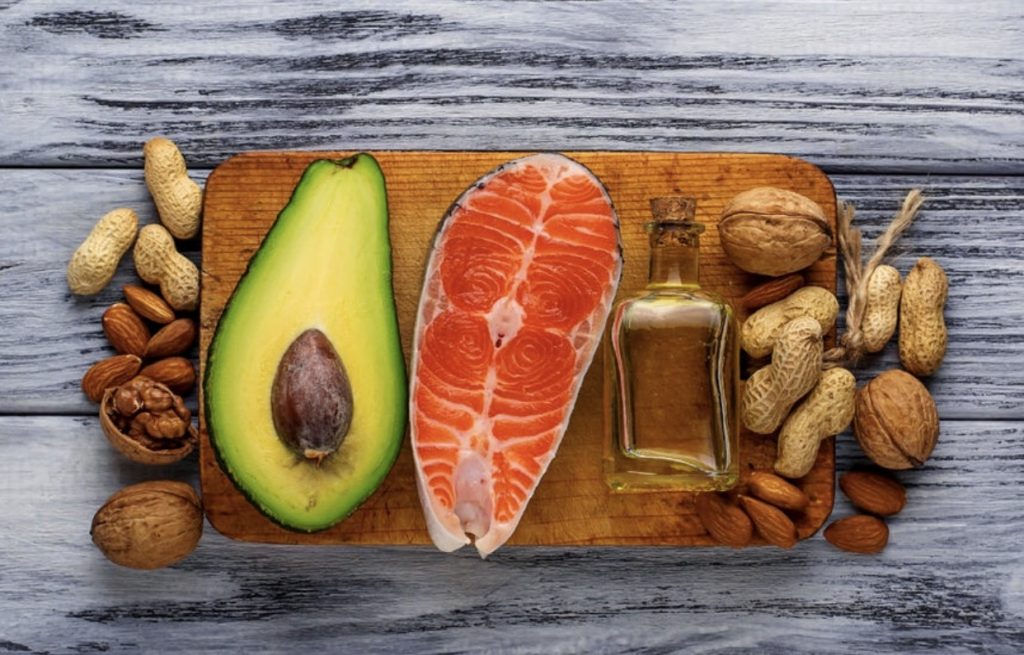 Healthy fats include grass fed/free range meats and poultry, wild caught fish, coconut, olive, avocado, and oils derived of these fats. Grass-fed butter and ghee are also good choices. This definitely does NOT include fried foods, or vegetable oils such as canola, soybean, or peanut, and even red meats should be minimized over seafood, poultry, and fatty fruits and nuts. Dairy is debatable. Many people have sensitivities to lactose or dairy in general. For some, low lactose dairy products such as Gouda, Cheddar, or even grass-fed butter may be okay, while moderate to higher lactose dairy products such as milk, cream cheese, sour cream, or water based cheeses like Mozzarella may cause digestive inflammation. You will need to listen to your body here. I personally only do dairy that has 0-1 grams of lactose per serving, which includes cheddar and sour cream, and I will often use them as healthy calorie toppers. Always make sure your oils are organic, extra virgin, and cold pressed. Do not cook with oils other than coconut oil, olive oil, and grass-fed butter or ghee. Coconut has the highest heating temperature for cooking. Be careful not to get them too hot or they become carcinogenic (cancer causing). This is why no fried foods.
Healthy fats include grass fed/free range meats and poultry, wild caught fish, coconut, olive, avocado, and oils derived of these fats. Grass-fed butter and ghee are also good choices. This definitely does NOT include fried foods, or vegetable oils such as canola, soybean, or peanut, and even red meats should be minimized over seafood, poultry, and fatty fruits and nuts. Dairy is debatable. Many people have sensitivities to lactose or dairy in general. For some, low lactose dairy products such as Gouda, Cheddar, or even grass-fed butter may be okay, while moderate to higher lactose dairy products such as milk, cream cheese, sour cream, or water based cheeses like Mozzarella may cause digestive inflammation. You will need to listen to your body here. I personally only do dairy that has 0-1 grams of lactose per serving, which includes cheddar and sour cream, and I will often use them as healthy calorie toppers. Always make sure your oils are organic, extra virgin, and cold pressed. Do not cook with oils other than coconut oil, olive oil, and grass-fed butter or ghee. Coconut has the highest heating temperature for cooking. Be careful not to get them too hot or they become carcinogenic (cancer causing). This is why no fried foods.
Eat Moderate Amounts of Protein
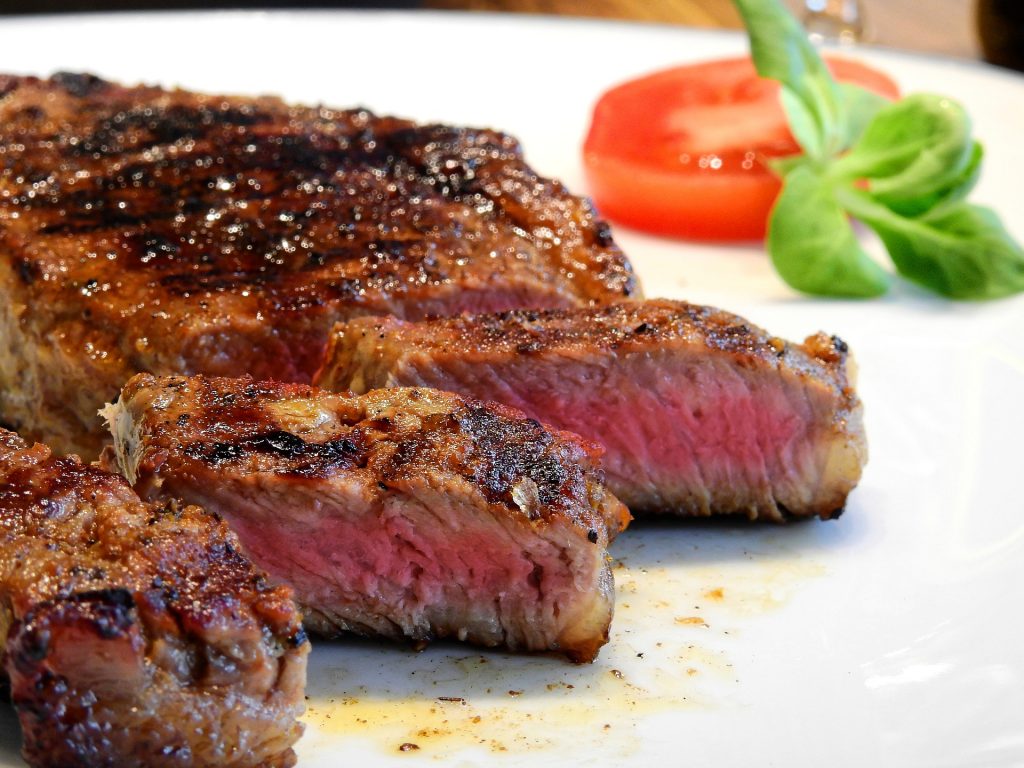 Eat a moderate amount of protein based on your fitness activities and goals. No more than 20-25% of your calories should come from protein. This is where I think most Paleo and Atkins type diets fail. Your protein intake should be roughly 0.4g/lb of bodyweight per day for very light exercisers, 0.6g/lb of bodyweight per day for cardio exercisers, and 0.8g/lb for weight lifters. Too much protein will keep you out of ketosis by converting into glucose, and too much can be bad for the body, it puts a toll on the organs and cells, and can lead to faster aging. In fact too many calories in general will put a toll on the body and cause quicker aging on a cellular/DNA level due to the overactivation of the mTor pathway, which is why I don’t recommend bulking. Don’t go too low in calories either or you may find yourself in starvation mode (fat storing mode) or worse, with energy and nutrient deficiencies.
Eat a moderate amount of protein based on your fitness activities and goals. No more than 20-25% of your calories should come from protein. This is where I think most Paleo and Atkins type diets fail. Your protein intake should be roughly 0.4g/lb of bodyweight per day for very light exercisers, 0.6g/lb of bodyweight per day for cardio exercisers, and 0.8g/lb for weight lifters. Too much protein will keep you out of ketosis by converting into glucose, and too much can be bad for the body, it puts a toll on the organs and cells, and can lead to faster aging. In fact too many calories in general will put a toll on the body and cause quicker aging on a cellular/DNA level due to the overactivation of the mTor pathway, which is why I don’t recommend bulking. Don’t go too low in calories either or you may find yourself in starvation mode (fat storing mode) or worse, with energy and nutrient deficiencies.
Avoid Processed Foods
 Avoid processed or refined foods and anything with preservatives as well. They contain few beneficial nutrients and are harmful to the body and lead to increased risk for cancer and other diseases. Fried foods and refined oil containing foods are carcinogenic and contain mega trans that lead to atherosclerosis and cardiovascular disease. Studies have documented that eating fried foods or refined oils is a leading cause of congestive heart failure. Refined oils contain highly toxic chemicals like n-hexane. Avoid canola , soybean, peanut, and cottonseed oils. Read the article about refined oils and heart attacks and watch the video on how they refine oils.
Avoid processed or refined foods and anything with preservatives as well. They contain few beneficial nutrients and are harmful to the body and lead to increased risk for cancer and other diseases. Fried foods and refined oil containing foods are carcinogenic and contain mega trans that lead to atherosclerosis and cardiovascular disease. Studies have documented that eating fried foods or refined oils is a leading cause of congestive heart failure. Refined oils contain highly toxic chemicals like n-hexane. Avoid canola , soybean, peanut, and cottonseed oils. Read the article about refined oils and heart attacks and watch the video on how they refine oils.
Buy Organic, Non-GMO
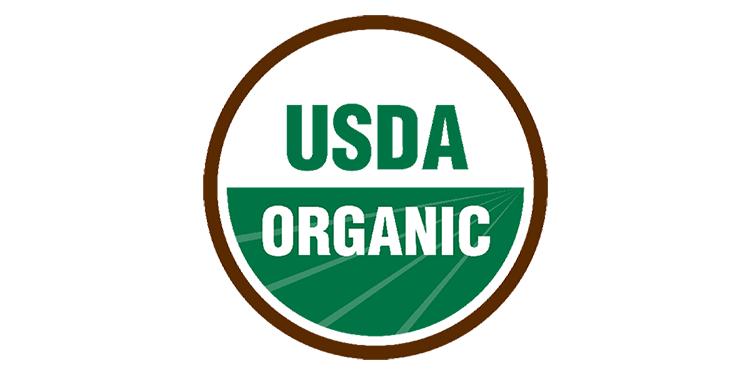 Buy all organic and grass fed, free-range meats and poultry with no hormones or antibiotics, and avoid GMO like the plague. Pesticides and genetically modified foods are known to be carcinogenic and tough on the digestive system. Foods are often tainted with antibiotics, and frequent consumption of any antibiotics create resistance and mutation of harmful bacteria that kill off good and necessary bacteria (Probiotics).
Buy all organic and grass fed, free-range meats and poultry with no hormones or antibiotics, and avoid GMO like the plague. Pesticides and genetically modified foods are known to be carcinogenic and tough on the digestive system. Foods are often tainted with antibiotics, and frequent consumption of any antibiotics create resistance and mutation of harmful bacteria that kill off good and necessary bacteria (Probiotics).
Avoid Grains and Starches
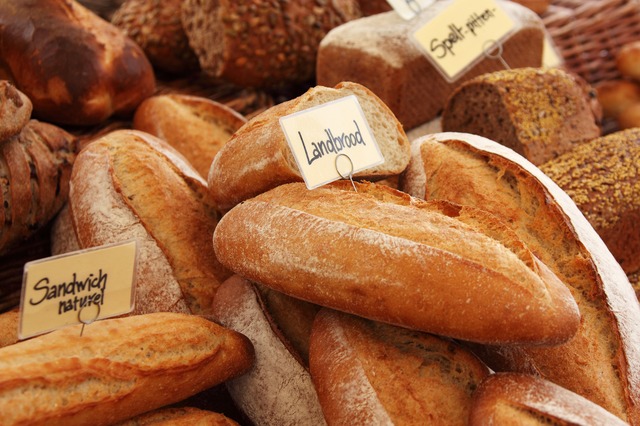 Avoid grains and starches such as wheat, barley, rye, soy, corn, rice, potatoes, and beans as much as possible, especially anything processed or refined. Not only will they keep you from reaching nutritional ketosis, but they contain lectins/gluten, which can cause inflammation (regardless of sensitivities and allergies), leading to problems such as leaky gut syndrome, and the increase of inflammatory genetic markers. The prolonged activation of these genes can further lead to the development and exacerbation of physical and mental chronic illness, like cancer, heart disease, diabetes, Alzheimer’s, arthritis, digestive diseases, depression, anxiety, and dozens more. Nightshade plants, like tomatoes and bell peppers, as well as tree nuts can also contribute to these problems in people with sensitivities, so get allergy tested by a specialist if you suspect these foods are bothering you. People with sensitivities to any of these generally have them to wheat and many other foods that contain large amounts of phytates.
Avoid grains and starches such as wheat, barley, rye, soy, corn, rice, potatoes, and beans as much as possible, especially anything processed or refined. Not only will they keep you from reaching nutritional ketosis, but they contain lectins/gluten, which can cause inflammation (regardless of sensitivities and allergies), leading to problems such as leaky gut syndrome, and the increase of inflammatory genetic markers. The prolonged activation of these genes can further lead to the development and exacerbation of physical and mental chronic illness, like cancer, heart disease, diabetes, Alzheimer’s, arthritis, digestive diseases, depression, anxiety, and dozens more. Nightshade plants, like tomatoes and bell peppers, as well as tree nuts can also contribute to these problems in people with sensitivities, so get allergy tested by a specialist if you suspect these foods are bothering you. People with sensitivities to any of these generally have them to wheat and many other foods that contain large amounts of phytates.
Consider Supplementation
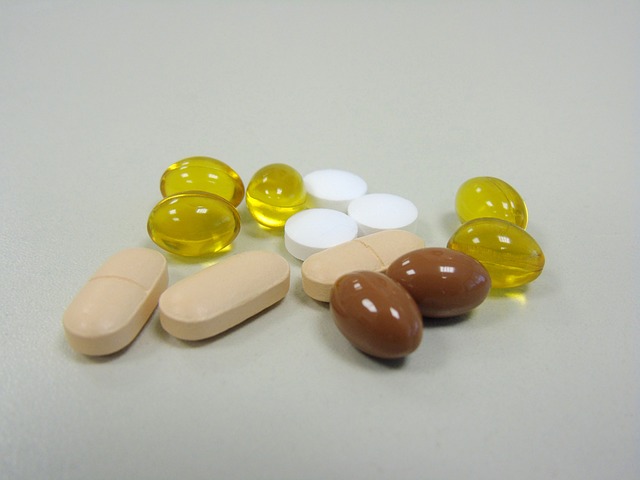 Soils around the country are depleted of vital nutrients making crops yield less nutrition. Produce are picked early to allow more time for transportation, leading to less nutrient density. Time on the shelf leads to further loss of nutrients. Oh yeah, and increases in environmental pollution burdens the body with more toxins that demand higher nutrient intake for detoxification . Caffeine depletes the body of many nutrients as well. Less than 14% of Americans eat the recommended servings of fruits and vegetables and an astounding 90% of Americans are deficient in vitamins, minerals, and phytochemicals. I strongly encourage getting blood work to assess any deficiencies and start a health regimen or at the very least start taking a quality multivitamin. Omega-3’s are another essential one. These are necessary or “essential” for life sustaining functions and must be obtained from diet or supplementation. Sadly, 75% of those who live a western cultured lifestyle are deficient in them. If you aren’t consuming 6 servings of fatty fish per week or lots of flax seed, then supplementation is essential! Even still, a little extra Omega-3’s through supplementation might provide significant health benefits such as pain reduction, cardiovascular and metabolic health improvements, as well as depression and anxiety relief. Probiotics regulate 70% of the immune system, and many other processes like digestion, allergy support, and brain and cardiovascular function. Due to the intake of environmental and medical antibiotics, it is a good idea to include some fermented foods in your diet such as natto (fermented soybeans), sauerkraut (cabbage), kimchi (spicy cabbage), Gouda and Brie cheeses, or low-sugar Greek yogurt. If you aren’t eating any of these then you should probably take a probiotic supplement (at least 25 billion CFU daily) and also some Vitamin K-2 to help with proper calcium regulation. A 20-30 gram serving of low-carbohydrate protein powder after a workout is great for your muscles, but don’t overdo it. Remember, moderate protein intake. There are many good supplements to choose from depending on your lifestyle and genetics, such as CoQ-10, Astaxanthin, Turmeric, or Mushrooms. Check out my top recommended health supplements page for more recommendations.
Soils around the country are depleted of vital nutrients making crops yield less nutrition. Produce are picked early to allow more time for transportation, leading to less nutrient density. Time on the shelf leads to further loss of nutrients. Oh yeah, and increases in environmental pollution burdens the body with more toxins that demand higher nutrient intake for detoxification . Caffeine depletes the body of many nutrients as well. Less than 14% of Americans eat the recommended servings of fruits and vegetables and an astounding 90% of Americans are deficient in vitamins, minerals, and phytochemicals. I strongly encourage getting blood work to assess any deficiencies and start a health regimen or at the very least start taking a quality multivitamin. Omega-3’s are another essential one. These are necessary or “essential” for life sustaining functions and must be obtained from diet or supplementation. Sadly, 75% of those who live a western cultured lifestyle are deficient in them. If you aren’t consuming 6 servings of fatty fish per week or lots of flax seed, then supplementation is essential! Even still, a little extra Omega-3’s through supplementation might provide significant health benefits such as pain reduction, cardiovascular and metabolic health improvements, as well as depression and anxiety relief. Probiotics regulate 70% of the immune system, and many other processes like digestion, allergy support, and brain and cardiovascular function. Due to the intake of environmental and medical antibiotics, it is a good idea to include some fermented foods in your diet such as natto (fermented soybeans), sauerkraut (cabbage), kimchi (spicy cabbage), Gouda and Brie cheeses, or low-sugar Greek yogurt. If you aren’t eating any of these then you should probably take a probiotic supplement (at least 25 billion CFU daily) and also some Vitamin K-2 to help with proper calcium regulation. A 20-30 gram serving of low-carbohydrate protein powder after a workout is great for your muscles, but don’t overdo it. Remember, moderate protein intake. There are many good supplements to choose from depending on your lifestyle and genetics, such as CoQ-10, Astaxanthin, Turmeric, or Mushrooms. Check out my top recommended health supplements page for more recommendations.
Exercise Regularly
 Exercise 30-60 minutes 3-5 times per week. HIIT (High Intensive Interval Training) cardio, plyometrics, calisthenics, and weight lifting exercises are great. The irisin hormone is only produced through exercise and is an important component to good health. Three of its functions include growing new brain cells, converting fats cells from storing mode to burning mode, and lowering insulin resistance. Eat slightly more carbs before intense exercise, when your body must use stored carbohydrates (glycogen).
Exercise 30-60 minutes 3-5 times per week. HIIT (High Intensive Interval Training) cardio, plyometrics, calisthenics, and weight lifting exercises are great. The irisin hormone is only produced through exercise and is an important component to good health. Three of its functions include growing new brain cells, converting fats cells from storing mode to burning mode, and lowering insulin resistance. Eat slightly more carbs before intense exercise, when your body must use stored carbohydrates (glycogen).
Fast Regularly
Do an Intermittent fast at least 1 to 2 times a week. It is a great way to improve health and weight management. I prefer a 5:2 ratio. Two consecutive days of 18 hour fasting, starting two hours before bed the prior day, over night, until mid afternoon the following day; consuming small portioned meals in a 6-8 hour eating window following the fast. This is to prevent increased fat storage and reassure the body of consistent food supply. Fasting allows the body to work on other important health processes, like organ healing and DNA/RNA repair. It also gives the body an opportunity to burn more stored fat, and get back into ketosis following a carb cycle day (more on that next). Another popular method is to fast 12 hours every day 5-7 days per week. This usually means no eating two hours before bed, sleep for 8 hours, and no eating two hours after waking up. This is usually a better option for someone who isn’t fully dedicated to the ketogenic lifestyle. Try going for a run or bike ride in the morning; fasting cardio is great for reducing body fat and releasing toxins. Fasting may seem scary at first, but after following my first few steps it becomes easily achievable.
Carb-Cycling
 Carbohydrate cycling, or “carb-cycling” days are not recommended during the first few months of starting a low-carb/high-fat diet, because the body will have a difficult time creating ketones from fat in the beginning, especially if you’ve developed some insulin resistance. Think of the truck example. Once the body starts to produce ketones regularly (use test strips to figure this out), and becomes efficient at using them, then one high-carb/low fat day per week is recommended (preferably before an intermittent fast or a long intense workout) to make this long term sustainable and keep fat burning hormones regulated. It is very important to lower your fat intake with these high-carb meals. I personally like to do large high-carb, low fat, fruit, vegetable and nut, and poultry salads. Carrots and coconut water are great too! Just try and minimize the grains, starches, and especially cakes, candies, and other sugars.
Carbohydrate cycling, or “carb-cycling” days are not recommended during the first few months of starting a low-carb/high-fat diet, because the body will have a difficult time creating ketones from fat in the beginning, especially if you’ve developed some insulin resistance. Think of the truck example. Once the body starts to produce ketones regularly (use test strips to figure this out), and becomes efficient at using them, then one high-carb/low fat day per week is recommended (preferably before an intermittent fast or a long intense workout) to make this long term sustainable and keep fat burning hormones regulated. It is very important to lower your fat intake with these high-carb meals. I personally like to do large high-carb, low fat, fruit, vegetable and nut, and poultry salads. Carrots and coconut water are great too! Just try and minimize the grains, starches, and especially cakes, candies, and other sugars.Avoid Sweetened Beverages and Eat Slowly
 Don’t drink any sweetened or alcoholic beverages at all. I know, I know! Just try! Alcohol will definitely keep you from getting into ketosis and knock you out of it, but if you must drink every now and then, try to choose low calorie beverages, and avoid beer and wine. Also, once you feel better, consider doing a fast to detoxify and push your body back into ketosis. Chew each bite 20 times during meals. Eat slowly and drink plenty of water. The average American eats in 7 minutes or less, and it takes 20 minutes for the body to signal the brain that it’s full, giving too much time in which to overeat, so slow down when you eat. One extra bite per meal or just 18 extra calories will cause an increase of 40 lbs over a period of 20 years. A full 8 oz glass of water in the morning can boost your metabolism as much as 30%.
Don’t drink any sweetened or alcoholic beverages at all. I know, I know! Just try! Alcohol will definitely keep you from getting into ketosis and knock you out of it, but if you must drink every now and then, try to choose low calorie beverages, and avoid beer and wine. Also, once you feel better, consider doing a fast to detoxify and push your body back into ketosis. Chew each bite 20 times during meals. Eat slowly and drink plenty of water. The average American eats in 7 minutes or less, and it takes 20 minutes for the body to signal the brain that it’s full, giving too much time in which to overeat, so slow down when you eat. One extra bite per meal or just 18 extra calories will cause an increase of 40 lbs over a period of 20 years. A full 8 oz glass of water in the morning can boost your metabolism as much as 30%.
Meditate Regularly
Meditation is great for anti-stress. This can have great mental and physical benefits, and has been shown under studies to have anti-aging effects on a cellular level. It can also indirectly lead to weight loss by reducing the fat storing stress hormone cortisol. Learning to meditate is beyond the scope of this guideline, but there are plenty of free tutorials online.
That’s it!!! Well, not really… There’s way more to it than that, but this is an excellent starting point. Good luck and be well!
Brandon Cunningham,
Nutrition Consultant
Nutrientgap.org

